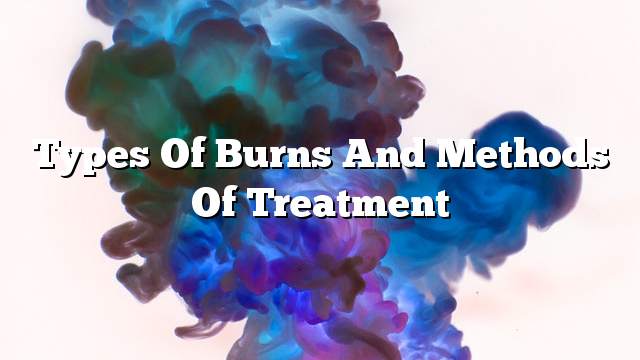Burns
Burns are the exposure of the skin to one of the heat transfer factors, which the skin can tolerate to a certain degree after which the cells begin to damage, as a result of the erosion of one of the layers of the skin as the layer of skin, or dermis, or layer under the dermis, resulting in redness, abrasion leaves disturbing effects later , And the burns vary according to the area covered between minor burns, burns and severe, and we will discuss the factors causing the burns, types and methods of treatment.
Causes of skin burns
- Sun rays: The skin is exposed to burning when exposed to ultraviolet light for long periods, where the heat resulting from these rays to the incidence of surface burns of the first degree, and the second.
- Flaming Fire: Is one of the most common causes of burns and is usually the result of a fire in the place, or the explosion of a cylinder of gas, or fire houses furniture with cigarette waste.
- Toughness: The body is affected by the electric shock, where the greater the resistance of the tissues to the intensity of the voltage increased the risk of burning, and the effect on the muscles greater than the impact on the skin apparent.
- Hot water: Skin carries water temperature up to 40 ° C, and when it rises above this limit causing damage to cells, the appearance of water bags on the skin.
- Chemicals: We often use detergents in which acidic and alkaline chemical substances are involved, and when the skin is overly or incorrectly exposed to severe burns.
Types of burns and methods of treatment
Methods of treatment of first degree burns
This type of burns affects the surface layer of the skin (skin layer), and is caused by exposure to hot sun for a long time, as a result of red spots on the skin accompanied by severe pain as the heat of the radiation provoked nerve receptors in the body, Burns within a week without leaving any traces on the body, and treat them as follows:
- Clean the infected area with cold water, antiseptic and sterile.
- Place a topical ointment on the area containing an antibiotic.
Treatment of second degree burns
In this type of burns beyond the skin layer, and affects the part of the layer of dermis, and therefore damage to parts of nerve endings causing great pain vary in size according to the area of the affected area, and treated as follows:
- Clean the area with sterile solution.
- Put sterile bandages and change them daily.
- Use antibiotics to prevent the proliferation of bacteria that lead to dermatitis.
- Treatment in the burn unit if the affected area is more than 15% of the body area.
- Perform surgery to patch the burned area in severe cases.
Third degree burns treatment
Burns are so deep that they destroy all layers of the skin, including hair follicles, muscles, nerves, and all of its glands and cells. These burns are very painful, or the patient may lose pain due to damage to sensory receptors and nerve endings.
- Take painkillers.
- The use of topical antibiotics, and compensation for lost fluids within the central care unit.
- Perform surgery to patch the affected area.
Effects and complications of burns
- Full deformity in the outer shape of the body, due to the healing of burns at random, and the lack of natural skin cells to reproduce, and thus heal by making fibrous tissue very different from normal skin and can not perform its functions.
- A negative impact on the psyche of the injured due to the deformity that has been caused, as this leads to the convergence and isolation from the people.
- Loss of burned parts to natural skin elasticity.
- The affected area is exposed to bacterial infections due to the exposure of the inner layer of the skin, and weak body resistance due to the burning of these bacteria.
